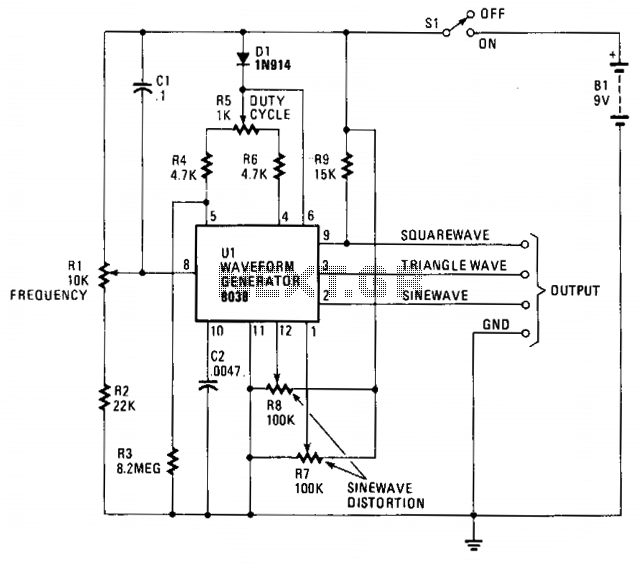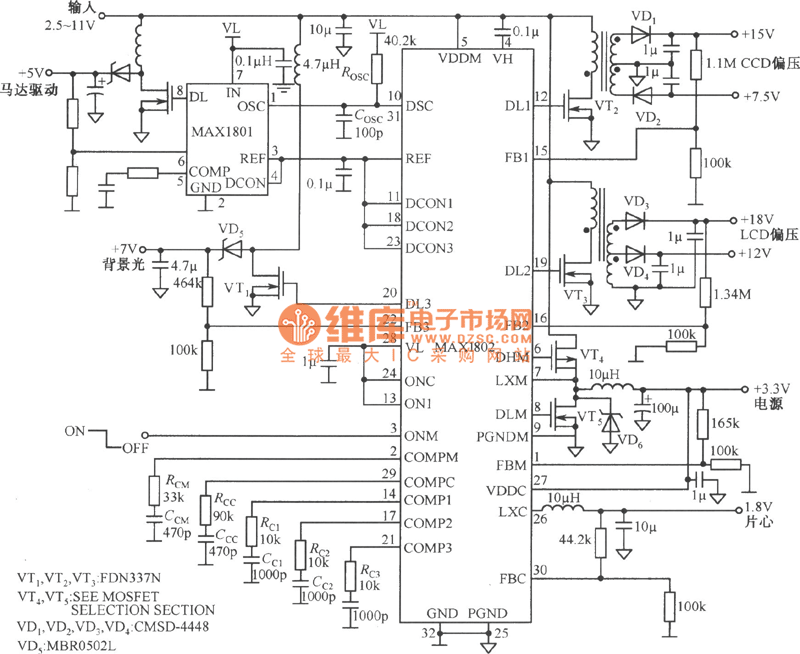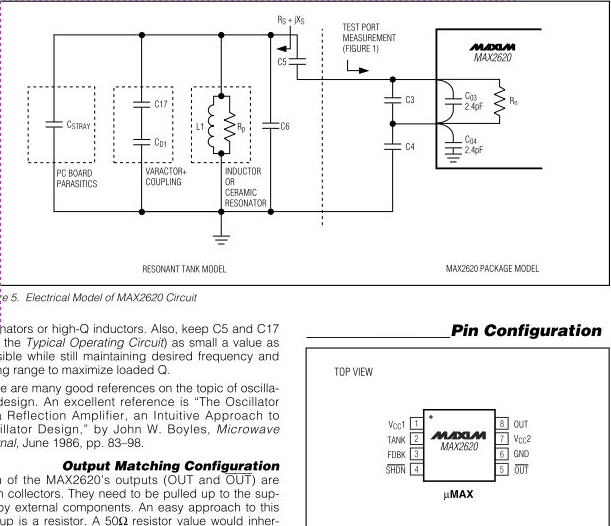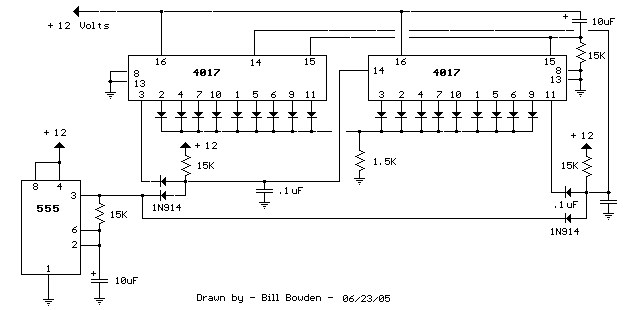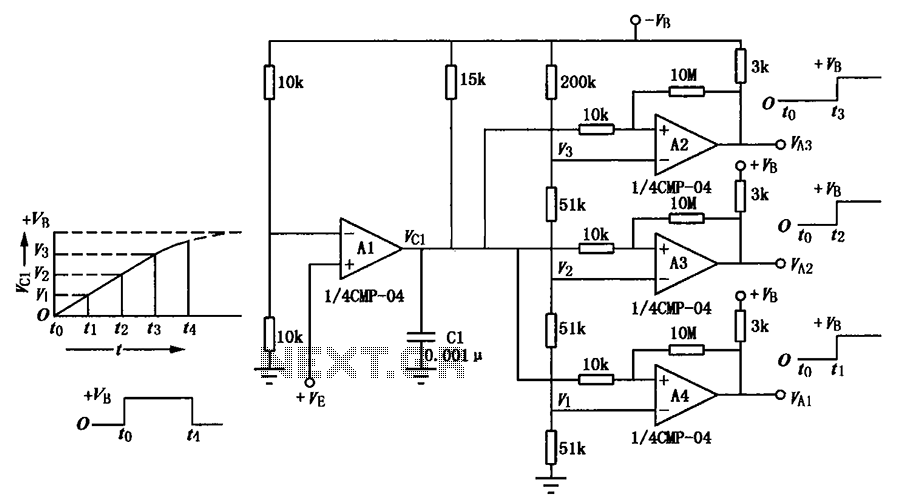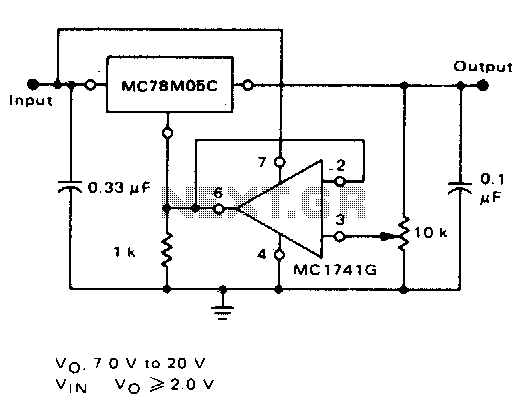
discussing output stage of square wave
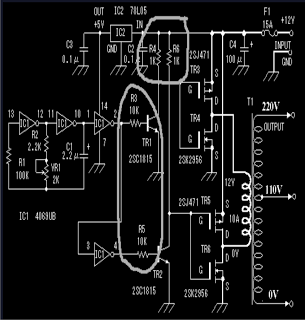
The circuit includes 10K resistors at the bases of the transistors and 1K resistors at the collectors. It is essential to retain these components when relocating the transistors, as omitting the 10K resistors could result in transistor failure, and without the 1K collector resistors, the MOSFETs will not function properly. All these components are necessary for the operation of the oscillator section, which is responsible for changing the waveform. The output stage, which amplifies signals into the transformer windings, remains unchanged from the original square wave design. There is a query regarding the diode junction, specifically whether to remove resistors R4, R5, R6, and R7 in favor of using only the two 10K resistors with the transistors. Despite following previous instructions, there have been issues with the inverter circuit, including loud noises and component failure. A complete circuit diagram on a PCB has been provided, with the square wave generator and PWM circuit on separate boards. It is suggested to connect the diode junctions directly through the 10K resistors from the square wave design, indicating that R4, R5, R6, and R7 may not be necessary. There is a concern that modifications to the secondary winding may be the source of the issues encountered.
The circuit design incorporates critical resistors that influence the performance and stability of the transistors and MOSFETs. The 10K resistors at the transistor bases serve to limit the base current, ensuring that the transistors operate within safe limits and preventing damage. Likewise, the 1K resistors at the collectors are vital for the proper operation of the MOSFETs, as they help manage the voltage and current flowing through the devices, ensuring reliable switching.
The oscillator section is designed to generate a waveform that can be adjusted based on the circuit's requirements. The output stage is responsible for amplifying this waveform and driving the transformer, which is crucial for applications such as power inverters. The design retains the integrity of the square wave format, which is known for its efficiency in driving inductive loads.
The inquiry about the diode junction and the potential removal of resistors R4, R5, R6, and R7 suggests a simplification of the circuit to enhance performance. By connecting the diode junctions directly through the 10K resistors, it may be possible to reduce complexity while maintaining functionality. However, caution is advised, as any changes made to the circuit, particularly in the secondary winding, could lead to unforeseen issues, including component failure and operational instability.
In summary, the circuit's performance hinges on the careful selection and placement of resistors and other components. Maintaining the integrity of the original design while making adjustments is critical to achieving the desired operational characteristics and ensuring reliability in the overall system.What about the 10K resistors at the bases of the transistors, and the 1K resistors at the collectors. Keep those with theTransistors when I move them, orget rid of them If the 10K resistors are not included the transistors will blow-off, without the 1K collector resistors the mosfets will not work.
so all of them are required. we are just interested in changing the waveform, which is solely connected with the oscillator section. The output stage which is responsible only for boosting the signals into the transformer windings, remains the same, just as it was with the square wave design. Hi Swag, one more question. On your circuit, at the Diode Junction, should I get rid of R4, R5, R6, R7 and just use the two 10K resistors, with the transistors.
Hi Swagatam, I followed your instructions to the letter and it still does not work. This time when I turned the Inverter ON it made a loud high pitched noise and blow one of the Mosfets. Sorry for the bad news. Hi Swagatam, here is a picture of the complete circuit on a PCB. The Square wave generator and PWM circuitare ontwo separate PCBs. I sure hope we can get this thing working. Quite unfortunate that its not working, you may directly connect the diode junctions through the 10K resistors of the square wave design, so R4, 5, 6, 7 are not required.
are you sure you are using exactly the same output stage set-up that was previously working with the square wave design I think you did some changes in the secondary winding. if that is true then that may be root cause of all the trouble. 🔗 External reference
The circuit design incorporates critical resistors that influence the performance and stability of the transistors and MOSFETs. The 10K resistors at the transistor bases serve to limit the base current, ensuring that the transistors operate within safe limits and preventing damage. Likewise, the 1K resistors at the collectors are vital for the proper operation of the MOSFETs, as they help manage the voltage and current flowing through the devices, ensuring reliable switching.
The oscillator section is designed to generate a waveform that can be adjusted based on the circuit's requirements. The output stage is responsible for amplifying this waveform and driving the transformer, which is crucial for applications such as power inverters. The design retains the integrity of the square wave format, which is known for its efficiency in driving inductive loads.
The inquiry about the diode junction and the potential removal of resistors R4, R5, R6, and R7 suggests a simplification of the circuit to enhance performance. By connecting the diode junctions directly through the 10K resistors, it may be possible to reduce complexity while maintaining functionality. However, caution is advised, as any changes made to the circuit, particularly in the secondary winding, could lead to unforeseen issues, including component failure and operational instability.
In summary, the circuit's performance hinges on the careful selection and placement of resistors and other components. Maintaining the integrity of the original design while making adjustments is critical to achieving the desired operational characteristics and ensuring reliability in the overall system.What about the 10K resistors at the bases of the transistors, and the 1K resistors at the collectors. Keep those with theTransistors when I move them, orget rid of them If the 10K resistors are not included the transistors will blow-off, without the 1K collector resistors the mosfets will not work.
so all of them are required. we are just interested in changing the waveform, which is solely connected with the oscillator section. The output stage which is responsible only for boosting the signals into the transformer windings, remains the same, just as it was with the square wave design. Hi Swag, one more question. On your circuit, at the Diode Junction, should I get rid of R4, R5, R6, R7 and just use the two 10K resistors, with the transistors.
Hi Swagatam, I followed your instructions to the letter and it still does not work. This time when I turned the Inverter ON it made a loud high pitched noise and blow one of the Mosfets. Sorry for the bad news. Hi Swagatam, here is a picture of the complete circuit on a PCB. The Square wave generator and PWM circuitare ontwo separate PCBs. I sure hope we can get this thing working. Quite unfortunate that its not working, you may directly connect the diode junctions through the 10K resistors of the square wave design, so R4, 5, 6, 7 are not required.
are you sure you are using exactly the same output stage set-up that was previously working with the square wave design I think you did some changes in the secondary winding. if that is true then that may be root cause of all the trouble. 🔗 External reference
